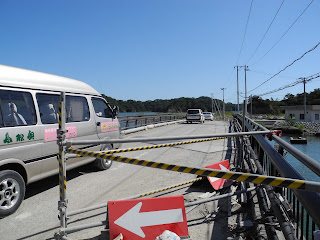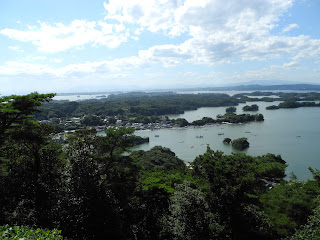One family, which had emigrated from Japan and settled at the turn of the century near San Francisco, had established a business in which they grew roses and trucked them into San Francisco three morning a week.
The other family was a naturalized family from Switzerland who also marketed roses, and both families became modestly successful, as their roses were known in the markets of San Francisco for their long vase-life.
For almost four decades the two families were neighbors, and the sons took over the farms, but then on December 7th, 1941, Japan attached Pearl Harbor. Although the rest of the family members were Americans, the father of the Japanese family had never been naturalized. In the turmoil and the questions about internment camps, his neighbor made it clear that, if necessary, he would look after his friend`s nursery. It was something each family had learned in church: Love thy neighbor as thyself. "You would do the same for us," he told his Japanese friend.
It was not long before the Japanese family was transported to a barren landscape in Granada, Colorado. The relocation center consisted of tar-paper-roofed barracks surrounded by barbed wire and armed guards.
A full year went by. Then two. Then three. While the Japanese neighbors were in internment, their friends worked in the greenhouses, the children before school and on Saturdays; and the father`s work often stretched to 16 and 17 hours a day. And then one day, when the war in Europe had ended, the Japanese family packed up and boarded a train. They were going home.
What would they find? The family was met at the train depot by their neighbors, and when they got to their home, the whole Japanese family stared. There was the nursery, intact, scrubbed and shining in the sunlight - neat, prosperous and healthy.
So was the balance in the bank passbook handed to the Japanese father. And the house was just as clean and welcoming as the nursery.
And there on the dining room table was one perfect red rosebud, just waiting to unfold - the gift of one neighbor to another.
naturalized: 帰化した
modestly: 控えめな
vase-life:
decades: 数十年
turmoil: 混乱
internment: 抑留
nursery: 育児所
thy: 汝
thyself: 汝自身
barren: 不毛の
tar-paper-roofed: タール屋根
intact:
scrubbed:
neat:
prosperous: 豊かな
rosebud: バラのつぼみ
unfold: 展開する
Work, Activity and Life from Tainan(Taiwan)
2011/10/23
2011/10/22
2011/09/27
2011/09/23
2011/09/22
Becoming friends with English
20110922_1
It has recently been announced that a new restaurant may be built in your neighborhood. Do you support or oppose this plan? Why? Use specific reasons and details to support your answer
20110922_2
You have decided to give several hours of your time each month to improve the community where you live. What is one thing you will do to improve your community? Why? Use specific reasons and details to explain your choice.
20110922_3
What are some important qualities of a good supervisor (boss)? Use specific details and examples to explain why these qualities are important.
20110922_4
A company is going to give some money either to support the arts or to protect the environment. Which do you think the company should choose? Use specific reasons and examples to support your answer.
It has recently been announced that a new restaurant may be built in your neighborhood. Do you support or oppose this plan? Why? Use specific reasons and details to support your answer
20110922_2
You have decided to give several hours of your time each month to improve the community where you live. What is one thing you will do to improve your community? Why? Use specific reasons and details to explain your choice.
20110922_3
What are some important qualities of a good supervisor (boss)? Use specific details and examples to explain why these qualities are important.
20110922_4
A company is going to give some money either to support the arts or to protect the environment. Which do you think the company should choose? Use specific reasons and examples to support your answer.
2011/09/19
2011/09/12
震災発生から178日目_東日本大震災_仙台、東松島、石巻
 |
| 平成23年9月7日、宮城県仙台市、東松島市、石巻市 |
 |
| [仙台市宮城野区]津波到達範囲は港の16から1までの高速道路まで |
 |
| 撮影点1:高速道路桁の下に漁船が見える |
 |
| 撮影点2:歩道上に漁船 |
 |
| 撮影点5:コンビニローソンの跡 |
 |
| 撮影点5:震災時閖上大橋の交通規制の注意 |
 |
| 撮影点5:ナンバーの付けたままの被災車 |
 |
| 撮影点7:閖上中学校、前の緑地は校庭 |
 |
| 撮影点6:コープ スーパーマーケット |
 |
| 撮影点6:遠目からは普通、全壊の住宅 |
 |
| 撮影点8:水産関係の会社 |
 |
| 撮影点8:うちの車、後方は病院(全壊) |
 |
| 撮影点12:歩道の様子 |
 |
| 撮影点10:公民館、名取市働く婦人の家(津波時の避難施設) |
 |
| 撮影点11:全壊のお寺 |
 |
| 撮影点13:ひよりばし(日和橋) |
 |
| 撮影点13:ひよりばし(日和橋) |
 |
| 撮影点13:歩道上のハンドホール |
 |
| 撮影点14:団地 |
 |
| 撮影点14:中央は瓦礫の山(コンクリ) |
 | |
|
 |
| 撮影点15:日和山富士主姫神社(被災) |
 |
| 撮影点15:日和山富士主姫神社、鳥居は最近再建 |
 |
| 撮影点15:閖上3,4丁目方向 |
 |
| 撮影点15:閖上小中学校の生徒の植えた向日葵 |
 |
| 撮影点15:名取市閖上地区で死者700名を超えた |
 |
| 撮影点15:閖上3,7丁目方向、緑で何事も無いように見えるが、、 |
 |
| 撮影点15:復旧工事車両 |
 |
| 撮影点16:閖上漁港 |
 |
| 撮影点16:東須賀地区の瓦礫(金属)処理風景 |
 |
| 撮影点16:アスファルトが捲れている |
 |
| 撮影点16:建物の基礎部分 |
 |
| 撮影点17:取り壊しの開始されない(気持ちの区切りのつかない)家、とその前には献花 |
 |
| 撮影点18:運河、築堤アスファルトが無くなっている |
 |
| 撮影点19:表札 |
 |
| 撮影点19:青く澄んだ空、整理された土地。再建 |
 |
| 撮影点20:老人ホーム |
 |
| 撮影点20:老人ホーム |
 |
| 撮影点19:玄関への階段部分 |
 |
| 撮影点19:駐車場部分 |
 |
| 撮影点7:取り壊し途中の病院 |
 |
| 撮影点6:中古車店 |
 |
| 松島町と東松島市 |
 |
| 撮影点21:陸前小野駅 |
 |
| 撮影点21:仙石線 |
 |
| 撮影点21:陸前小野駅封鎖 |
 |
| 撮影点21:陸前小野駅構内 |
 |
| 撮影点22:東松島市 |
 |
| 撮影点22:長音寺の墓地 |
 |
| 撮影点22:野蒜海水浴場 |
 |
| 撮影点22:松並木跡 |
 |
| 撮影点22:松並木跡 |
 |
| 撮影点22:県道27号線 |
 |
| 撮影点22:防災無線 |
 |
| 撮影点22 |
 |
| 撮影点22:公衆トイレ |
 |
| 撮影点22 |
 |
| 撮影点22:瓦礫置き場 |
 |
| 撮影点22 |
 |
| 撮影点22:地盤沈下して海になった海岸線 |
 |
| 撮影点22:瓦礫置き場 |
 |
| 撮影点23:松ヶ島橋、復旧 |
 |
| 撮影点23:松ヶ島橋 |
 |
| 撮影点23 |
 |
| 撮影点23:中央は海、左側は新たに海になった陸地 |
 |
| 撮影点23:松ヶ島橋 |
 |
| 撮影点23 |
 |
| 撮影点23:手前の基礎は売店、奥は公衆トイレ |
 |
| 撮影点23:公衆トイレ |
 |
| 2008年夏 |
 |
| 撮影点23:公衆トイレ |
 |
| 撮影点23 |
 |
| 撮影点23 |
 |
| 撮影点23:打ち上げられたコンクリート |
 |
| 撮影点23:観光案内板の跡 |
 |
| 2008年夏 |
 |
| 撮影点23 |
 |
| 撮影点23 |
 |
| 撮影点23 |
 |
| 撮影点23 |
 |
| 撮影点24 |
 |
| 撮影点24:大高森の上から野蒜海水浴場方向を見る |
 |
| 撮影点24:松島町方向 |
 |
| 撮影点24 |
 |
| 撮影点24 |
 |
| 撮影点24:被害の少なかった湾内のホテル |
 |
| 撮影点23:ユンボ |
 |
| 撮影点25:仙石線 |
 |
| 撮影点25:松島町から |
 |
| 撮影点25:松島町から。普段通り |
 |
| 石巻市 |
 |
| 撮影点26:市立門脇小学校 |
 |
| 撮影点26:稱法寺と解体中の家 |
 |
| 撮影点26:南浜町1丁目12番付近 |
 |
| 撮影点26:上記の地番付近見た目まあまあの家 |
 |
| 撮影点26:木村鉄工所 |
 |
| 撮影点26:鉄工所前の沈下した土地 |
 |
| 撮影点26:後方石巻市立病院と前方二階建てのアパート |
 |
| 県道240号線須賀松海側 |
 |
| 2008年夏、レストラン回線市場 |

 |
| 仮設住宅、期限は2年間、、、 |
登録:
コメント (Atom)





